Solarpunk. A remix.
In Which a Hyperstitional Conversation Takes Place.
Bricolaged from non-fictional texts written by eight physically embodied humans who identify themselves as solarpunks and/or its critics.
Dramatis Personae
Adam Flynn (AF)
Andrew Dana Hudson (ADH)
Elvia Wilk (EW)
Jay Springett (JS)
Paul Graham Raven (PGR)
Phoebe Wagner & Brontë Wieland (PWBW)
Sarena Ulibarri (SU)

PWBW: What are the stories of those inhabiting the leverage points, the crucial moments when great change can be made by the right people with the right tools? Stories of the peoples living during tipping points, and the spaces before and after them, the stories of those who fought to effect change and seek solutions, even if it was too late—that’s solarpunk.
AF: We’re solarpunks because the only other options are denial or despair.
ADH: … the world of solarpunk is this world. The here, the now and the very soon. Burdened with all that that’s been slung across our backs.
JS: Solarpunk is punk because it stands in opposition to the increasingly mainstream position that we live in a world with no future. If the present condition of capitalist realism can be said to be defuturing, then solarpunk is a tool for refuturing the imagination.
EW: If critique is inevitably bound to be taken as proposal at some level, there is an argument to be made that coming up with ideas you think are positive is simply the more ethical choice. That is, if Capitalist Realism reigns, you might as well represent ways to better the Real.
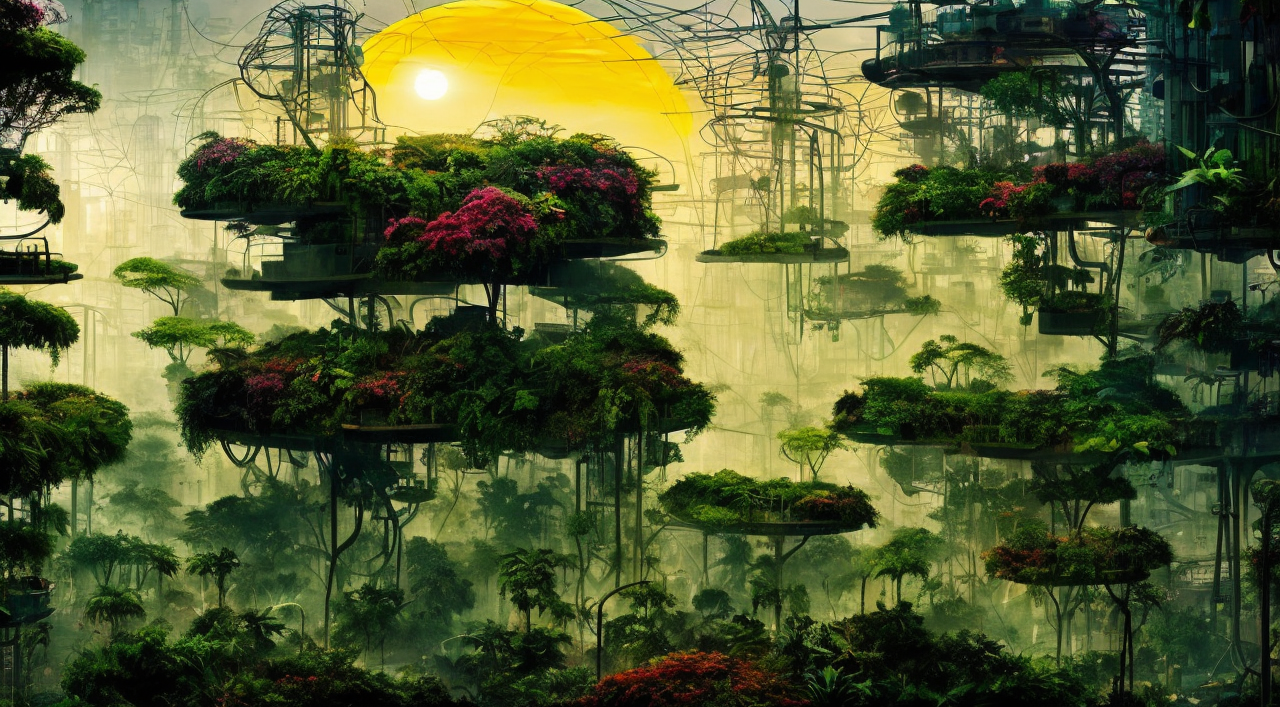
ADH: Solarpunk feels like a cathartic uncorking of a pent up imagination, and that energy can be channeled in different directions. You’ve heard of the hacker slogan “move fast and break things”? Solarpunk should move quietly and plant things.
AF: Imagine permaculturists thinking in cathedral time. Consider terraced irrigation systems that also act as fluidic computers. Imagine “smart cities” being junked in favor of smart citizenry.
ADH: Don’t ask permission from a state beholden to oligarchs, and definitely don’t expect those oligarchs to do any of this for you. Guerilla gardening is the model, but look further. Guerilla solar panel installation. Guerilla water treatment facility restoration. Guerilla magnificent temple to the human spirit construction. Guerilla carbon sequestration megastructure creation.
JS: Solarpunk worlds depict curated landscapes: hillside agroforestry in keyline rows, rain gardens and revitalised suburbs undergoing sprawl repair. These aren’t products of far-fetched technological leaps. Instead, they are a collection of ideas pulled laterally from the world as it exists today (or that were historically overlooked) and projected forward, everywhere. Its aesthetic emerges from real world praxis, from recovered agency.
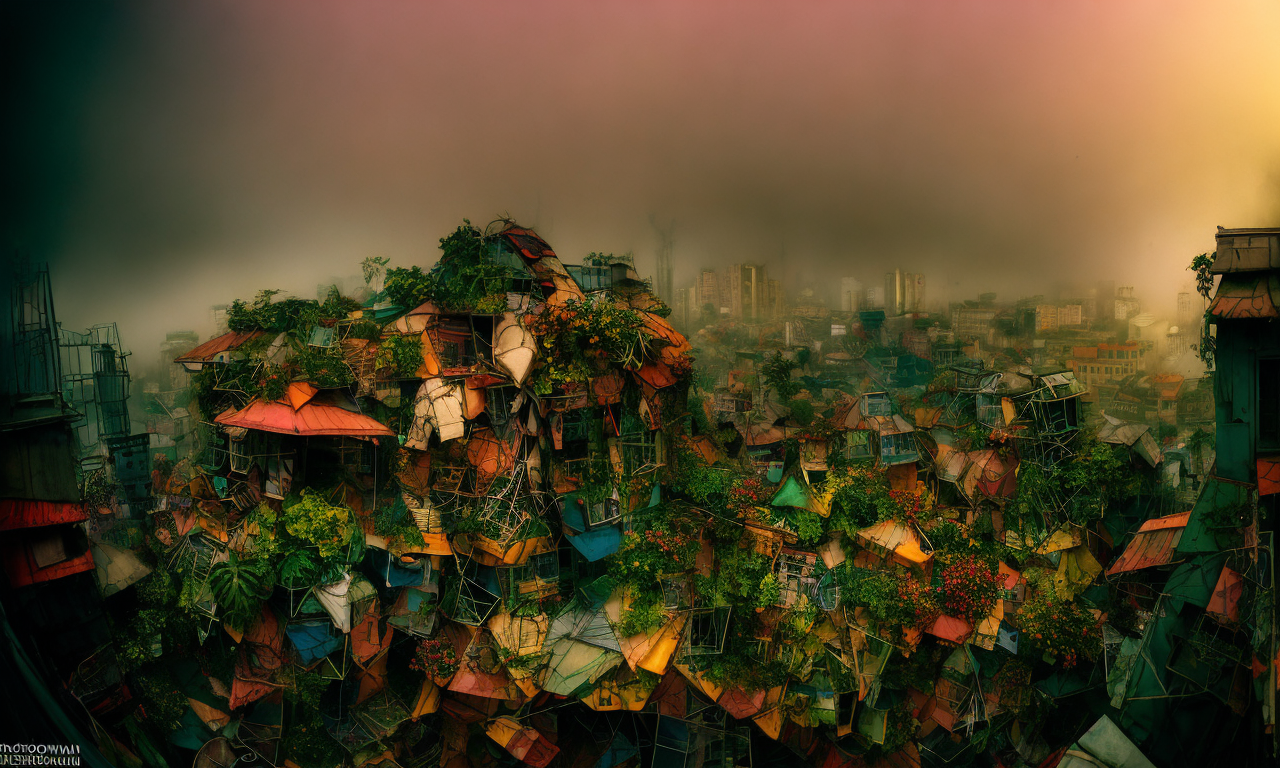
PGR: [...] based on an understandable but nonetheless naive hope that petroculture is a synonym for extractivism (rather than its most recent costume change), and that “innovation” will (finally! eventually! somehow!) rescue us from the compound consequences of the last two centuries or so of “innovation”.
ADH: More than just sketches and photos of vertical farms, I see solarpunk inspiring people to question the arrangements of modern life and, more importantly, propose alternatives. Imagine a tree, growing amidst rubble, rooting around rocks into open spaces, occasionally pushing cracks wider. The tree can’t remove the concrete, but the concrete is too poorly maintained to stop it. In the same way I think solarpunk should work to reinvent civilization from within. Through local free association and global networks, solarpunk can create connected pockets of vibrancy and resistance amidst a larger world of decline and oppression.
PWBW: A common thread through these ideas is community. Being a solarpunk is a collaboration, not an individualistic identity. As the solarpunk genre gains more recognition, the goal shouldn’t be to evangelize or make it more of a thing. Ultimately, a solarpunk invests in the local, is community-based, works in their direct surroundings, helps the people directly around them. Build connections within your community, not walls around your community.
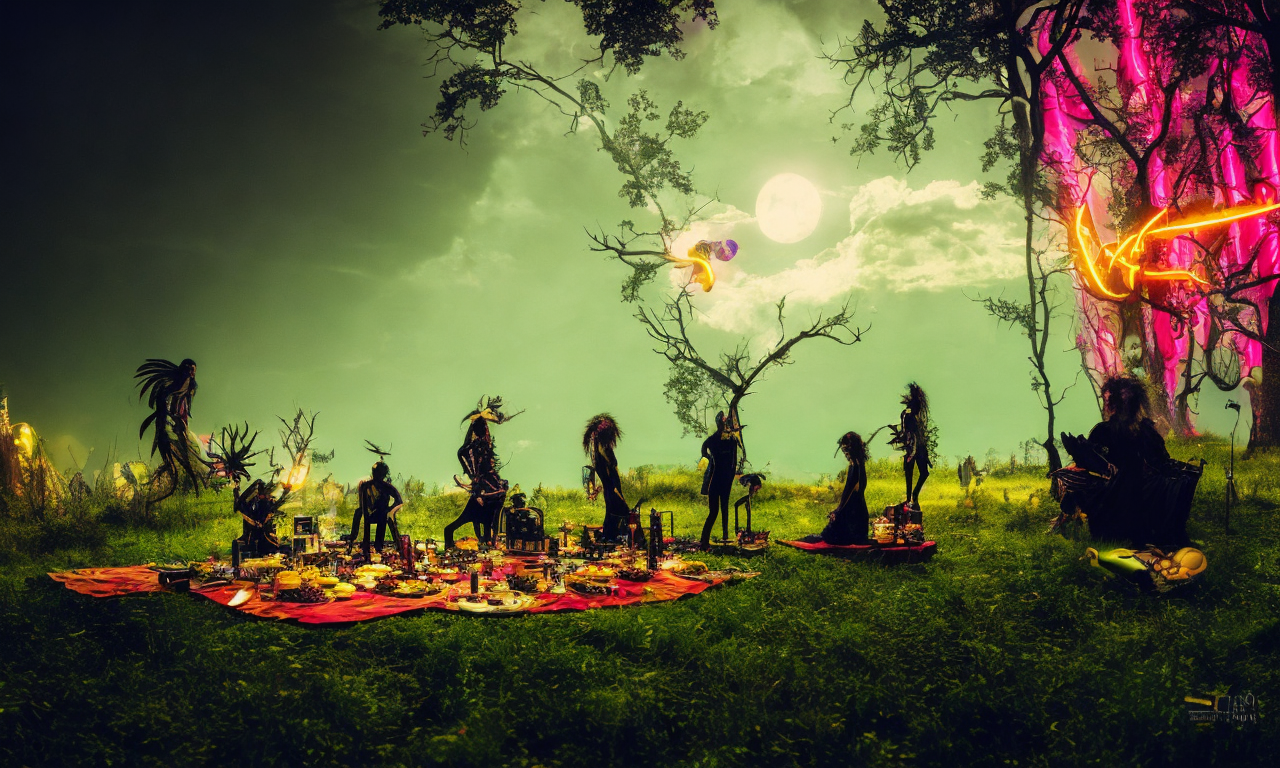
JS: Introducing people to real, practicable ideas has a dislocative effect, and the everyday becomes a site for both real and imagined narrative possibility, where the dead grass next to the parking lot at the mall becomes a prime location for rewilding. Or a piece of scrubland at the end of the cul-de-sac is seen as a space ripe for a community food forest. Rooftops yearn for solar panels. Statues demand to hold up wind turbines.
PGR: Sure, putting solar panels on every surface might help get us away from an energy system whose countless hydra-heads are still slurping at oil-wells and gas platforms and coal mines. But the rare earth metals required for their manufacture, and for the manufacture of the ever-more ubiquitous electronics that will be needed to manage their generative capacity: whose land will they be dug up from? Who will profit from their extraction and refinement and manufacture and shipping? Who will make them, what will they be paid, and what injuries will they receive in the process? Who will be able to afford them, and who will not? Sometimes presented as a corrective to cyberpunk’s dystopian depictions of capital run amok, solarpunk is better understood as what a cyberpunk future will look like for the lucky ones.
SU: Just as “solar” means more than only solar panels, the green cityscapes of the solarpunk aesthetic are not meant to represent a singular vision of the future. Instead, they represent the core values inherent in solarpunk: sustainability, safe and equitable communities, and a healthy balance between nature and technology.
EW: To prevent earnestness from devolving into twee, the stories themselves need to be dislocated along with the imagery. Dislocation, rather than utopianism, is what will keep Solarpunk from running off as a libertarian seasteading vision, accelerationist implosion, or even just a store in the mall—and maybe even reclaim, if there is such a thing, punk.
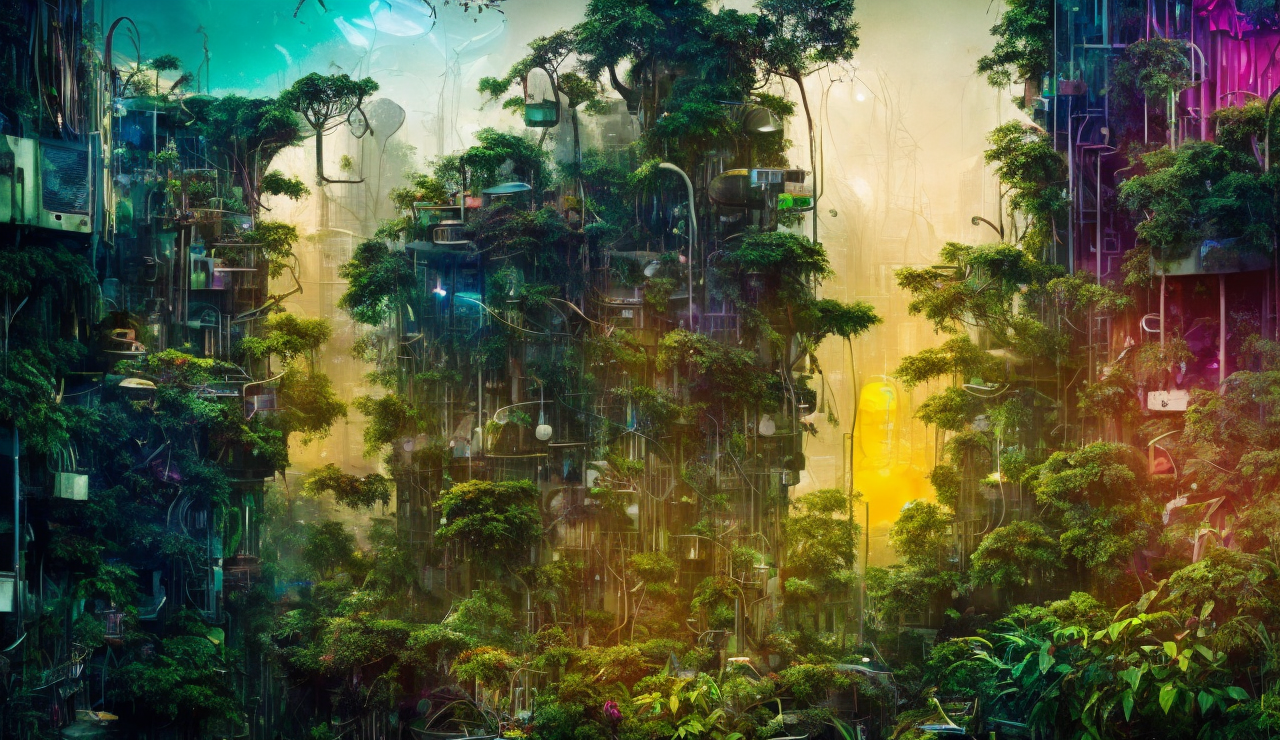
ADH: We must be both fictional and practical, aesthetic and political, of design and of action.
JS: Ideas inspire when they are held in relation, not appropriated or confiscated. Solarpunk’s bricolage approach is a result of (and a strategy for) the including and raising up of voices from outside the Western world, as well as of marginalized voices from within.
SU: A label is only as valuable as its ability to communicate and organize. Use it if it resonates with whatever steps you’re taking to reimagine the future. The more voices that join this chorus, the more likely we are to collectively imagine a world that serves the needs of everyone who lives there.
ADH: I see solarpunk as the seeds of an open source movement, the primordial form of global network society.
JS: Each story and point of view in juxtaposition with one another. Each story adding to the texture, each book in turn contributing towards the chorus. There is no one fixed future, given the choice between ‘the only solution’ and ‘possible options,’ solarpunk will always choose the latter.
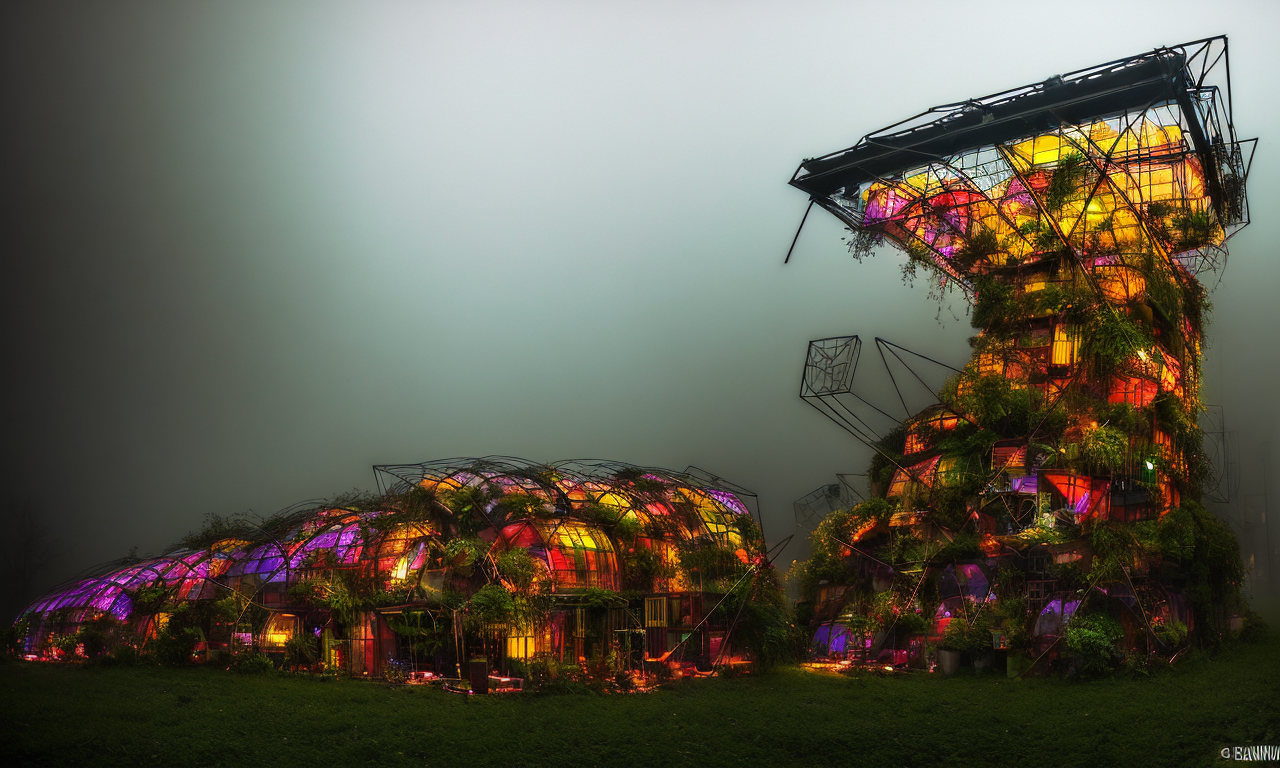
PGR: Solarpunk is less the invention of the new than the replication of the rare. Solarpunkish urban locales have existed in Singapore for well over a decade, for example, and slices of that aesthetic can be found in most major cities of the world—though many such spaces are private rather than public (as indeed are urban spaces more generally). This is not to say that a world in which solarpunk was the dominant urban aesthetic wouldn’t be some sort of improvement on the present—though I dare say we would soon tire of it in the same way that all but partisans and contrarians have long since tired of brutalism, which once signified social-democratic futurity in much the same way as solarpunk, despite the stark difference in its visual affect.
SU: Though we sometimes disagree about what a solarpunk world looks like, we are united by our vision of a future based on hope. But “hope” is a tricky concept. It can be a catalyst for action, or a crutch supporting denial. Hiding from horrid realities or deluding ourselves that everything will turn out OK is not the type of hope solarpunks embrace.
PWBW: Solarpunk is often thought of as an environmental ethos, but we must remember that there is no environmental justice without racial and decolonial justice. These issues are not and never have been separate. To treat environmentalism without considering how it is influenced by colonial capitalism and white supremacy is to maintain those systems. Solarpunk needs to focus on continually expanding to proactive decolonial, anti-racist, and anti-capitalist action.
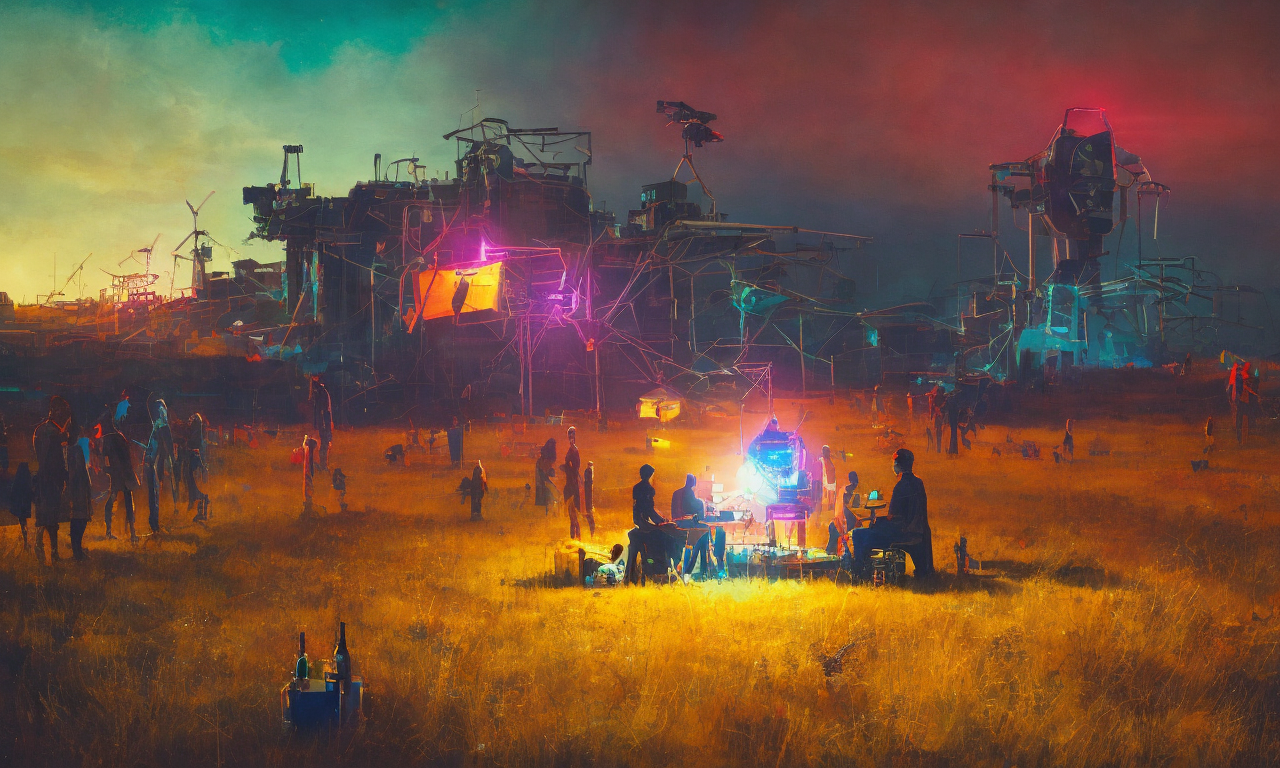
ADH: As you world-build, ponder the whys of wearing fashions of joy as a response to global sorrow. Remember that cathedral-time decisions are minute compared to climate-scale momentum. Understand that solarpunk’s “dirt behind the ears” needs to come from planting something that will reclaim a bit of that carbon we burned. Hold your optimism up to the muggy, yellow light and make sure we are willing to work for it. For solarpunk to lead us towards a better future, it must look our climate sins in the eyes, acknowledge their gravity, and start fixing that carbon. There is no going back. Only slowly, steadily clawing our way through, to something better.
JS: Speaking in the depths of the Covid-19 pandemic, Arundhati Roy was asked what lies ahead. “Reimagining the world,” she said. “Only that.”
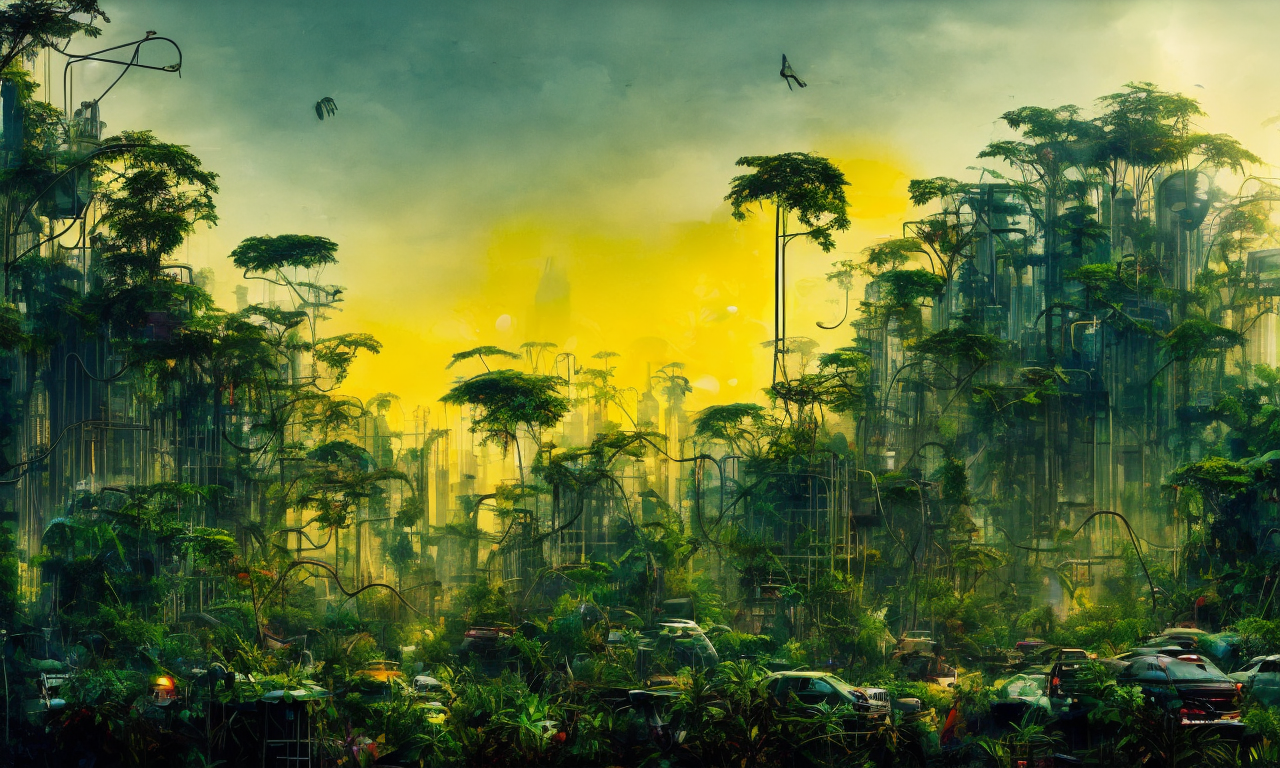
❧